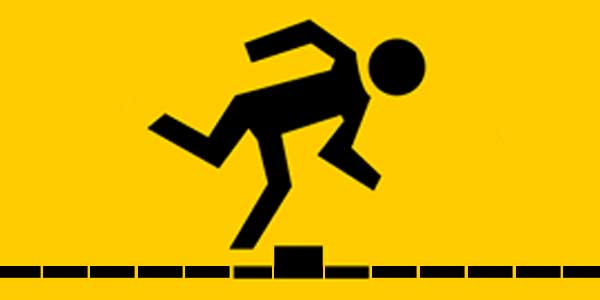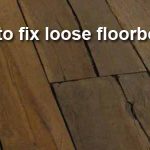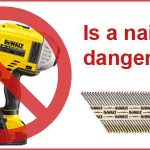Loose floorboards are a common problem in many homes. If you have noticed an area of flooring that moves when you walk on it, this is a sign that the floorboard is loose. This could be an issue due to incorrect fixing. Or perhaps it is damaged in some way and needs replacing.
A loose floorboard is not usually considered dangerous. Although, in some cases it could be the sign of a bigger problem under the boards that needs fixing. There is also the chance of it becoming a trip hazard. Also, if the board is not sat on a joist and has a lot of up and down movement, there is the potential for it to damage your carpets.
In most cases, it is a sign of lose or poor fixings, and this can usually be repaired with a small amount of work.
Why do floorboards come loose?

There are actually quite a few reasons a floorboard could be loose. Below you can see some of the most common reasons:
Loose floorboard reason 1 – Poor fixings
This could be found in new or old floorboards, in areas that are not fixed correctly. It could be an area that was missed when the floorboards were being fitted, or perhaps there is a reason that they couldn’t get a good fixing.
Poor fixings can happen when there isn’t much room to nail or screw the floorboard, due to pipes or wires. Or maybe the floorboard didn’t land well on a joist and the fixing was right at the end of the board. Either of these could result in a low quality partial fixing, that could easily come loose at a later date.
Loose floorboard reason 2 – Old fixings
This is most common in older properties where floorboards are nailed. Over time the nails can rust and deteriorate. As a result, the board will no longer be fixed well to the joist below. This is a very common cause of squeaky floorboards.
Loose floorboard reason 3 – Boards damaged when fitting
Just like any type of timber, floorboards are prone to damage if they are not handled and fitted correctly. A common type of damage is the grain splitting when the floorboards are fixed. This is quite common when fixings are applied to the end of the boards. If they do split, it means the nail or screw will be providing a very poor fixing and movement could occur.
Loose floorboard reason 4 – Poor re-fitting or replacement
This is very common when people like plumbers and electricians cut floorboards to access wires or pipes below. Often, they will cut the boards in an area that doesn’t have a joist running below for support.
If they don’t fix this issue and create some new support for the floorboard, the end will be left floating with nothing below it.
Loose floorboard reason 5 – Damaged or deteriorated boards
Floorboards can become damaged for many reasons. However, one of the most common is rotten boards. This is something that will occur over longer periods and is the result of exposure to excess moisture.
If you do have rotten floorboards, you should aim to fix this as soon as you notice the issue. Rot can spread and it may be the sign of a more serious issue in the joists below.
If you are noticing a bounce in the floor near external walls. This is often more serious and could be a sign that the joist ends have become rotten and need replacing.
How do you deal with loose floorboards?
Before you deal with loose floorboards, you first need to determine why they are loose. It is highly likely that it will fall into one of the reasons mentioned above. The good news is most of these are quite easy to fix.
First you will need to access the floorboards by pulling back any carpet or other flooring that is laid on top of them. For a carpeted floor, this is relatively easy, and you just need to pull the carpet up at the edge. Once you get one bit up, it is then quite easy to pull the carpet away from the carpet grippers. Simply pull the carpet and underlay back to an area where you can access the floorboard in question.
At this point, it should be quite easy to identify the problem.
Adding new fixings
If there is a lack of fixings, or damaged fixings. Then this can simply be re-fixed. To get the best fixing you can use screws.
Before you apply any new fixings, you should first check below for any pipes or wires. Don’t just apply fixings before checking. If you hit a water pipe this could cause a huge amount of water damage and hitting electrical cables could also be dangerous.
Supporting cut boards
If the floorboard is not well supported below. For example, if it has been cut and isn’t sat on a joist, this will need rectifying.
If boards have been cut next to an existing joist and are just floating, you can simply screw a baton to the joist to carry the floorboard. However, if the cut is in a random place and nowhere near a joist, you will need a different solution
One of the best ways to fix this, is by screwing a piece of timber below the floorboards either side. To do this, cut a piece of timber with a length that spans under the boards either side. Remove your loose board and place the timber below the floorboard, spanning under the boards on each side.
Once the timber is running below, where the end of your floorboard will land, you can fix it in place. To do this, pull it up tight to the bottom of the floorboards, next screw down through them into the timber below. Once you have done this on both sides, you will have a solid piece of timber for your floorboard to sit on. Ideally you should use something like 2X2 or even 3X2 to ensure a solid amount of support.
Rot, damage, and woodworm
If you find any damage when you are checking loose floorboards, you will need to determine why it has occurred. In some cases, a board may have split or cracked due to a defect. In this case you can usually just replace the board.
However, if the boards are clearly weak and soft, this can be the sign of a more serious problem. If there is moisture present, and you can break the floorboards with your bare hands, this is a clear sign of damp and rot. If this is the case, you need to stop the damp first. Then you will need to remove any rotten timbers and replace.
If you notice any small holes in the timber this could be a sign of woodworm. Again, this is something that needs fixing ASAP.
Both woodworm and rot can spread and if you don’t fix them sooner rather than later, the repair bills can really stack up. This is also one of the rare times, when loose floorboards are potentially dangerous. If this type of damage spreads into structural timbers, it can affect their structural integrity. This could lead to extensive damage and potential injury
Conclusion
Loose floorboards are rarely considered dangerous, 90% of the time the solution is very simple, and most fixes could be performed by someone with a small level of DIY knowledge.
The main thing is to identify the issue. You can usually do this quite easily, by taking a look at the floorboard in question. Once you have identified the issue, you can check for pipes and wires. Then when you are happy that you won’t hit anything with fixings, you can proceed to fix your loose floorboards in place.
If you do find rot or woodworm, it’s probably time to call in the professionals. Also, if you don’t want to carry out repairs yourself, you can simply hire a local joiner or handyman. This type of job will usually be quick and simple, so you won’t be paying much for the work.




